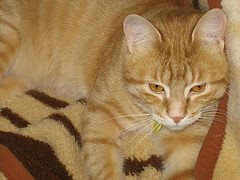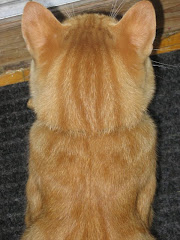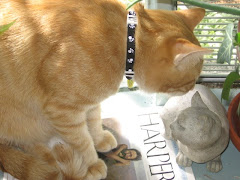
Text and Photography By : Füsun Atalay ~ Copyright © 2006
If the word fondue brings back nostalgic memories of bonding around a pot of bubbling melted cheese, a large plate full of cubed crusty bread, and a few bottles of chilled wine, then you are part of the Baby Boomers who made fondue popular in the 60s and 70s. Like most fashionable trends that sleep a while before a big comeback, fondue is becoming popular in the new millennium as an easy and intimate entertaining style.
Using top quality ingredients such as loin cuts of beef, steak, peeled shrimp, filets of fish, as well as ripe, unblemished fruits and vegetables is the most important step in fondue dining.
Another point worth noting is that placing too many fondue forks into the hot oil at one time will lower the temperature quickly, preventing the ingredients from cooking properly.
Simple vegetable-broth, or fat free chicken stock makes a lighter, calorie-wise base for fondue cooking than the cheese or hot oil versions. Potatoes as well as other vegetables or small bits of seafood are cooked in the simmering pot of broth.
Traditional cheese fondue is made with Emmentaler or Gruyere cheese and seasoned with garlic, pepper and dry white wine. Cherry brandy, or kirsch, is sometimes added to the mixture, which is served as a dip for chunks of bread.
A baguette or any crusty French or Italian style bread is best for a cheese fondue. When you slice the bread leave a bit of the crust on every piece . The crust helps to keep the bread on the fork after it is placed in the cheese. But dippers don’t have to be limited to bread. Steamed, diced potatoes or steamed vegetables such as broccoli, cauliflower, asparagus and baby carrots also make healthy and tasty dippers.
Dessert fondues are the ultimate finish to an intimate meal. Chocolate fondue is still a favourite for dipping strawberries, bananas, grapes, oranges or even, cubes of pound cake or angel food cake.
Fondue Etiquette
Fondue is a communal meal that dictates a few basic rules of decorum. To enjoy a meat fondue, spear a piece of meat, dip it in the hot oil, and let it sit until the meat is cooked to your preference. Remove the fork and place it on your plate, use your dining fork to slide the meat off the fondue fork. Use your regular fork to dip the meat in the sauce of your choice, and eating your tasty morsel.
For cheese fondue spear a piece of bread using a fondue fork to dip it into the pot. Turn the bread cube to coat it with cheese . Allow the excess cheese drip and cool a little before you put the coated bread in your mouth. Just as double dipping is frowned upon, so is touching the fork with your lips or tongue, as the fork does go back in the pot. Ideally you should use a dining fork to slide the bread off the fondue fork and eat it with the second fork.
Whether it’s a simple cheese fondue, or an elaborate assortment of meats and vegetables, followed by warm, decadent chocolate with an array of dippers, there is something very cosy and festive about a group of friends or family gathered around a table, dipping food impaled on long handled forks into a communal pot. Here are three fondue recipes to inspire party ideas in the new year.
Classic Swiss Fondue ~ Serves 4
1 clove garlic, halved
8 fl oz dry white wine, or rose wine
1 teaspoon lemon juice
2 cups grated Gruyere cheese
2 cups grated Emmental cheese
1 teaspoon cornflour
1 teaspoon dry mustard
2 Tablespoons kirsch
Freshly ground nutmeg and pepper to taste
Rub inside of the fondue pot with the cut clove of garlic.
Pour in wine and lemon juice and heat gently until the liquid begins to bubble.
Reduce the heat to low, and gradually stir in grated cheeses. Continue to heat, stirring frequently, until the cheeses melt.
In a small bowl, blend cornflour with kirsch to a smooth consistency.
Stir into cheese mixture and continue stirring for 2-3 minutes until mixture is thickened and smooth.
Transfer to a fondue pot.
Orange-Chocolate Fondue
½ cup evaporated milk or light cream
2 cups semisweet chocolate chips
½ cup honey
1 teaspoon vanilla extract
2 Tablespoons orange flavored liqueur
OR
1 teaspoon grated orange peel AND 2 teaspoons orange juice
Combine evaporated milk or cream, chocolate pieces, honey and butter in fondue pot or heavy saucepan. Place over low heat and cook, stirring constantly until chocolate is melted and the mixture is smooth. Blend in liqueur and vanilla. Keep mixture warm over low heat of fondue burner. Serves 6 to 8.
Dippers
Strawberries, banana slices (dipped in lemon juice to prevent oxidation), pineapple chunks, mandarin orange segments, orange slices, grapes, melon balls, kiwi fruit slices, pound cake cubes, lady fingers, marshmallows, angel food cake cubes and vanilla wafers.
Copyrighted Material ~ Copyright © 2006 All Rights belong to Füsun Atalay











































